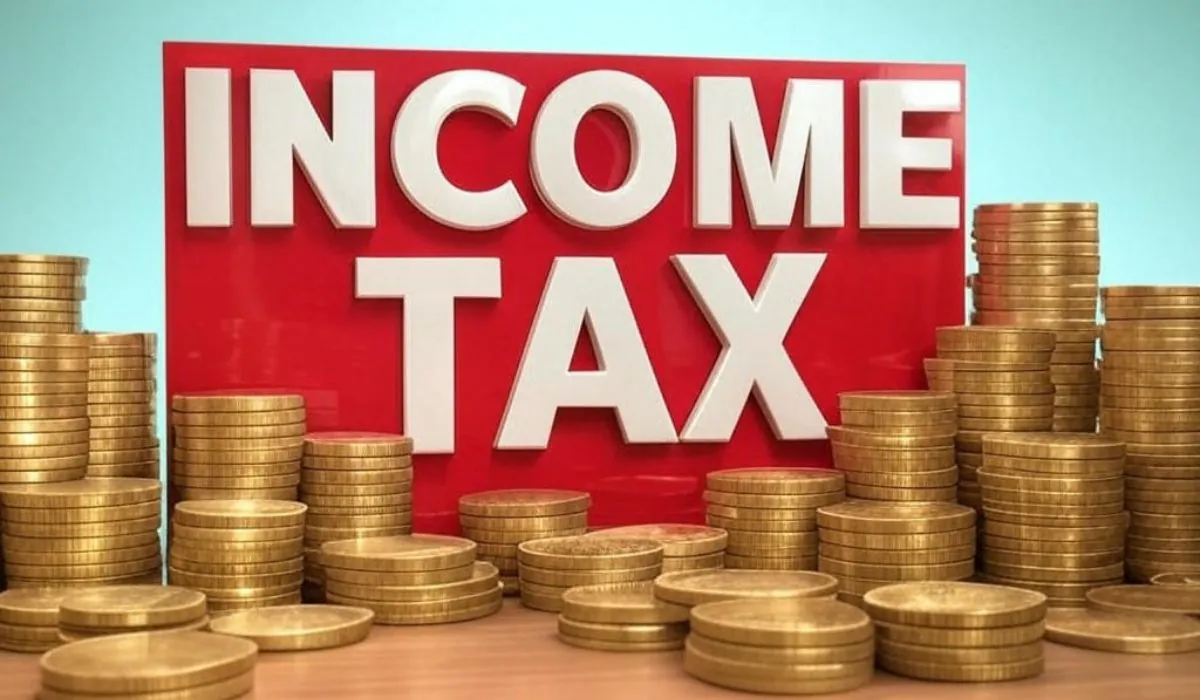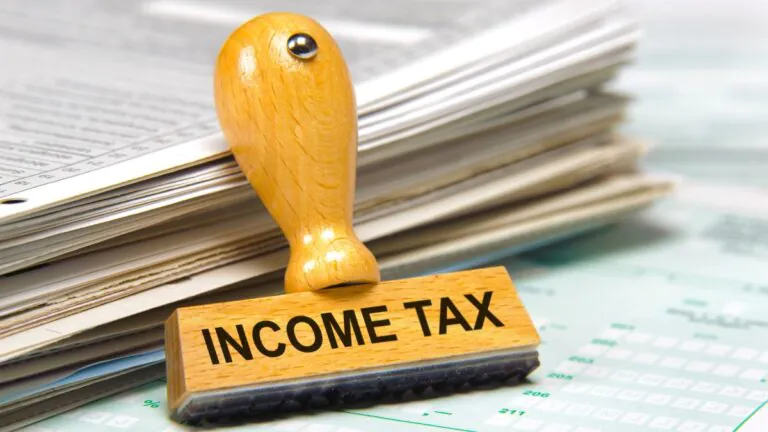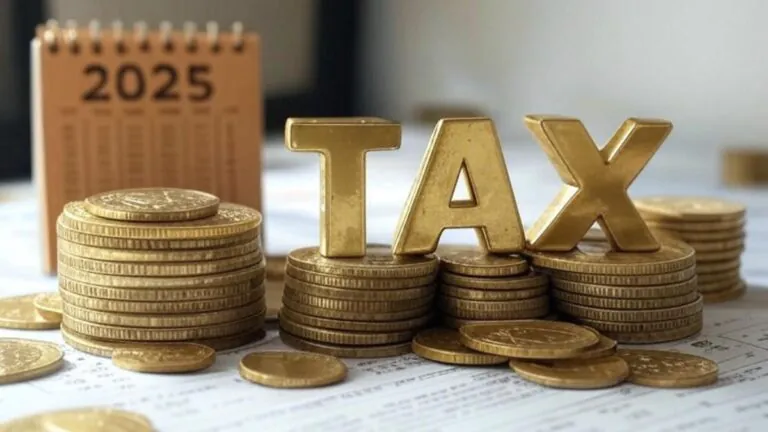Tax Optimization Secrets for Salaried Indians Earning 10 Lakhs

As a salaried Indian earning ₹10 lakhs annually in 2025, mastering tax optimization can significantly boost your take-home income.
With the right strategies, you can minimize your tax liability while staying compliant with the Income Tax Act. This article unpacks actionable tax optimization secrets tailored for middle-income taxpayers like you. We’ll explore deductions available under Section 80C, such as ELSS, discuss the benefits of House Rent Allowance (HRA), and evaluate the advantages and disadvantages of the new tax regime.
All updated with real-time insights for the financial year 2025-26 (Assessment Year 2026-27). Let’s explore how you can keep more of your hard-earned money.
Table of Contents
ToggleWhy Tax Optimization Matters for ₹10 Lakh Earners
For salaried individuals earning ₹10 lakhs, tax planning isn’t just an option – it’s a necessity. Without tax optimization, you could end up paying ₹1 lakh or more in taxes under the old regime, or slightly less under the new one, depending on your choices. The key lies in understanding your options and leveraging them smartly. Whether you’re a young professional or a mid-career employee, these strategies can help you reduce your taxable income effectively.
The Indian tax system offers two regimes in 2025: the old regime with deductions and the new regime with simplified slabs. tax optimization hinges on picking the right one for your financial situation. Let’s break it down.
Section 80C: Your Tax Optimization Powerhouse
Section 80C remains a cornerstone of tax optimization under the old regime, allowing deductions up to ₹1.5 lakhs. For someone earning ₹10 lakhs, this can slash your taxable income to ₹8.5 lakhs right away. Here’s how you can maximize it:
- Public Provident Fund (PPF): A safe, long-term investment with tax-free returns. Invest ₹1.5 lakhs annually to fully utilize this deduction.
- Equity Linked Savings Scheme (ELSS): With a 3-year lock-in, ELSS offers market-linked returns and tax benefits. Ideal if you’re comfortable with moderate risk.
- Life Insurance Premiums: Premiums paid for yourself, spouse, or children qualify. Ensure the premium is less than 10% of the sum assured for policies after April 2012.
- Home Loan Principal: Repaying your home loan? The principal component qualifies under Section 80C, doubling as a wealth-building tool.
By investing ₹1.5 lakhs in ELSS or PPF, you could save up to ₹31,200 in taxes (assuming a 20% tax slab under the old regime, plus 4% cess). Check the Income Tax Department’s official guide for eligible instruments.
HRA Benefits: A Game-Changer for Renters
If you live in a rented house, House Rent Allowance (HRA) is a tax optimization gem under the old regime. For ₹10 lakh earners, this exemption can save thousands annually. The exempt amount is the least of:
- Actual HRA received from your employer.
- 50% of your basic salary (metro cities) or 40% (non-metro cities).
- Rent paid minus 10% of your basic salary.
For example, if your basic salary is ₹4 lakhs, you receive ₹1.5 lakhs as HRA, and pay ₹1.8 lakhs in rent in a metro city:
- 50% of basic = ₹2 lakhs.
- Rent paid – 10% of basic = ₹1.8 lakhs – ₹40,000 = ₹1.4 lakhs.
- Exempt HRA = ₹1.4 lakhs (the least of the three).
This reduces your taxable income to ₹8.6 lakhs, saving you ₹29,120 in taxes (20% slab + cess). Non-renters miss out on this, making HRA a critical tax optimization tool for urban salaried taxpayers.
Old Regime vs. New Regime: A Tax Optimization Dilemma
The new tax regime, default since 2023, offers lower tax rates but scraps most deductions. For ₹10 lakh earners, choosing between the two is pivotal for tax optimization. Let’s compare:
Old Regime
- Tax Slabs: 5% (₹2.5-5 lakhs), 20% (₹5-10 lakhs), 30% (above ₹10 lakhs).
- Deductions: ₹1.5 lakhs (Section 80C), ₹50,000 standard deduction, HRA, etc.
- Tax Liability Example: Gross income ₹10 lakhs – ₹1.5 lakhs (80C) – ₹50,000 (standard) – ₹1.4 lakhs (HRA) = ₹6.6 lakhs taxable. Tax = ₹62,400 (including cess).
New Regime
- Tax Slabs (2025-26): 0% (up to ₹4 lakhs), 5% (₹4-8 lakhs), 10% (₹8-12 lakhs), etc.
- Deductions: Only ₹75,000 standard deduction applies.
- Tax Liability Example: ₹10 lakhs – ₹75,000 = ₹9.25 lakhs taxable. Tax = ₹47,500 (including cess).
Verdict: If your deductions exceed ₹2.5 lakhs (80C + HRA), the old regime wins. Otherwise, the new regime’s simplicity and lower rates make it a tax optimization favorite. Use an online tax calculator to crunch your numbers.
Additional Deductions for Tax Optimization
Beyond Section 80C and HRA, other deductions can enhance your tax optimization under the old regime:
- Section 80D: Health insurance premiums up to ₹25,000 (₹50,000 for senior citizen parents). Saves ₹5,200-₹10,400 in taxes.
- Section 80CCD(1B): Additional ₹50,000 for National Pension System (NPS) investments. Cuts tax by ₹10,400.
- Home Loan Interest (Section 24): Up to ₹2 lakhs on self-occupied property interest. Reduces taxable income significantly.
For a ₹10 lakh earner maximizing these (₹1.5 lakhs 80C + ₹25,000 80D + ₹50,000 NPS), taxable income drops to ₹7.75 lakhs, with tax liability around ₹41,600 – saving nearly ₹60,000 compared to no planning.
Pros and Cons of the New Tax Regime
The new regime’s tax optimization appeal lies in its simplicity, but it’s not perfect. Here’s a breakdown:
Pros
- Lower Rates: Tax-free up to ₹4 lakhs, 5% up to ₹8 lakhs – ideal for minimal deductions.
- No Paperwork Hassle: No need to track investments or rent receipts.
- Higher Standard Deduction: ₹75,000 vs. ₹50,000 in the old regime.
Cons
- No Major Deductions: Goodbye to 80C, HRA, and 80D benefits.
- Less Savings for Investors: If you invest heavily, the old regime outperforms.
For ₹10 lakh earners with few deductions, the new regime’s tax of ₹47,500 beats the old regime’s ₹62,400 (with moderate deductions). But if you’re a savvy investor or renter, stick to the old regime for better tax optimization.

Practical Tax Optimization Tips for 2025
- Compare Annually: Your income and expenses change – reassess regimes yearly.
- Restructure Salary: Opt for tax-friendly components like meal vouchers or NPS contributions via your employer.
- Start Early: Invest in ELSS or PPF early in the year to spread costs and earn returns.
- Leverage Marginal Relief: If income slightly exceeds ₹12 lakhs, the new regime offers relief up to ₹12.75 lakhs for salaried folks.
For small business owners earning less, check out our guide on Small Business Tax Optimization: Slash Taxes on ₹5 Lakh Profits for tailored strategies.
Insights for 2025
The Union Budget 2025 raised the new regime’s basic exemption to ₹4 lakhs and standard deduction to ₹75,000, per Times of India. This makes it more attractive for ₹10 lakh earners with low deductions. However, the old regime still holds strong for those leveraging HRA and 80C, especially in metro cities where rent is high.
Your Tax Optimization Blueprint
Earning ₹10 lakhs in 2025 doesn’t mean handing over a hefty chunk to taxes. With tax optimization, you can save ₹50,000-₹80,000 annually.
The old regime shines with deductions like Section 80C (ELSS, PPF) and HRA, while the new regime suits those preferring simplicity over investments. Calculate your liability under both, factor in your lifestyle, and choose wisely.
Start planning now – your wallet will thank you!
Disclaimer
Well Returns is not a financial adviser. The content provided here is for informational purposes only and is intended to offer a brief overview and general knowledge. It is not a substitute for professional financial advice. Please consult a qualified financial adviser before making any financial decisions or investments.
Related FAQs
By investing in tax-saving instruments like PPF, NPS, or insurance.
Deductions for HRA, education loan interest, medical insurance premiums.
Invest in ELSS, EPF, life insurance premium, and PPF.
Premium paid for health insurance is eligible for tax deduction.
Submit rent receipts to claim HRA exemption under Section 10(13A).






